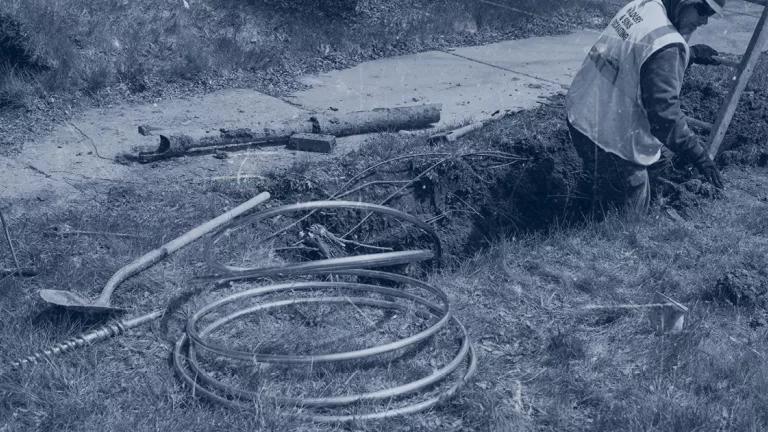
Brittany Greeson for NRDC
Lead service lines—the pipes that carry water from the water main under the street to residences—have long been recognized as the primary contributor of lead in drinking water (we’ll call them lead pipes for simplicity’s sake). After conducting a survey of these lead pipes in the United States, NRDC estimates that there is a range of 9.7 million to 12.8 million pipes that are, or may be, lead, spread across all 50 states, including those that claim to have none. Unfortunately, given the lack of accurate state-provided data, this already shocking number could be a low estimate, and the associated health risks are enormous.
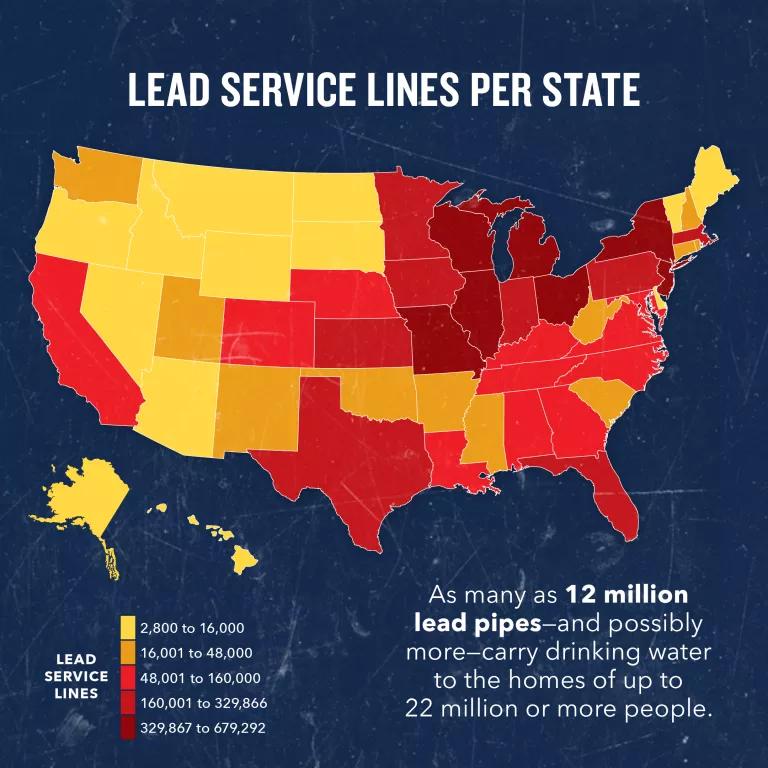
In an effort to characterize the scope and geographic reach of the problem, NRDC requested estimates of total lead water pipes from all 50 states and Washington, D.C. Just 10 states (AK, CA, CO, CT, IL, IN, MI, NJ, OR, WI) and the District of Columbia were able to provide us with statewide lead pipe estimates. After multiple follow-ups, 23 states (AL, AZ, DE, FL, ID, IA, LA, ME, MD, MT, NC, ND, NH, NM, NV, NY, OH, PA, SD, TN, TX, UT, WV) informed us that they do not track the number of lead pipes and could not provide us with those estimates. A few states (GA, MA, MO) reported that they are in the middle of surveying their lead pipes. Several states (AR, KS, KY, MS, NE, OK, RI, SC, VT, WY) failed to respond, despite at least three requests for these data. Four states (HI, MN, VA, WA) could provide data for only part of the state, which rendered it unusable for survey purposes.
This lack of data is concerning for multiple reasons. The U.S. Environmental Protection Agency (EPA) issued the Lead and Copper Rule, which set health standards for lead and copper in drinking water 30 years ago in 1991, yet most states do not have data on lead water pipes in their state, making it unlikely that they have been able to adhere to these health standards during that time. Additionally, in 2018, Congress required that the EPA develop an estimated number of lead pipes and the cost to replace them for each state by 2022. (See Safe Drinking Water Act Section 1452(h)(2)). The EPA is required to obtain these data from the states as part of its 2022 quadrennial “needs survey” for the Drinking Water State Revolving Fund (DWSRF). The DWSRF provides grants to states to pay for drinking water infrastructure; a few states have used a small amount of these funds for lead service line replacements. It is troubling that so few states have made the effort to estimate the number of their lead pipes in the face of the looming 2022 statutory deadline.
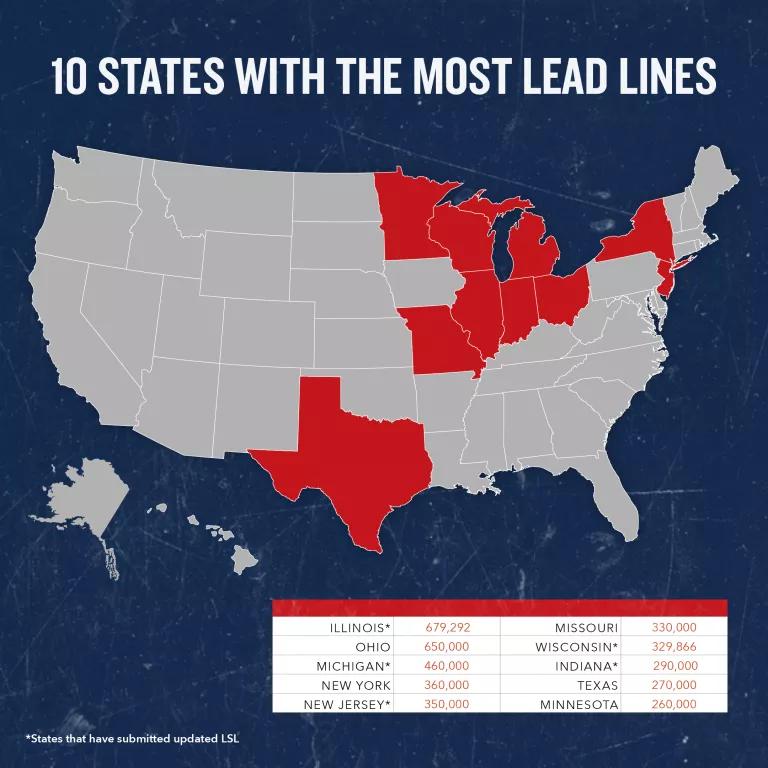
For those states that did not provide estimates, we relied upon a water industry self-survey from 2016 that the U.S. Government Accountability Office has noted provides “lower-bound” estimates. Combining the state-provided estimates with the 2016 water industry self-survey, we estimate that there are about 6.2 million known lead water pipes, plus 3.5 million to as many as 6.6 million service lines that are of “unknown” material but may be lead, for a total of 12.8 million pipes that are known to be lead or may be lead. However, because unknown pipes were only reported to us by six states (CA, IL, IN, MI, NJ, WI) and Washington, D.C., it is possible that even more unknown pipes exist and may be lead. There is no way to know without additional data collection how many of these unknowns are lead, but we know that previous pipe studies likely provided “lower bound” estimates due to data limitations. Put simply, the best guess is that the number of lead pipes is likely to go up from earlier industry estimates.
Our survey also revealed that lead water pipes are likely in use in all 50 states as well as in D.C. Alaska and Oregon state officials claimed to us that they have none, but the 2016 water industry self-survey estimated that Alaska had about 3,800 lead pipes, and Oregon had about 14,000 lead pipes.
When states do more detailed reviews of the number of lead pipes, our survey shows that previous industry guesstimates can turn out to be underestimates. For example, the 2016 industry self-survey estimated that there were 730,000 lead pipes in Illinois; when the state mandated a detailed inventory, the state identified 679,292 known lead service lines plus 782,246 that were of unknown material but might be lead, with a potential total number of lead service lines in excess of 1.4 million. Similarly, the industry self-survey estimated that Washington, D.C., had 8,900 lead pipes; the updated 2021 city survey now estimates more than triple that number, at 31,974. A few other states like Michigan and New Jersey have recently estimated fewer known lead pipes than the previous industry estimate but, at the same time, categorized hundreds of thousands of lead pipes as “unknown.” In the map, we have included a range for the 11 states that have updated numbers, along with the water industry study data to give a broader sense of the discrepancy between the industry data and state-led data.
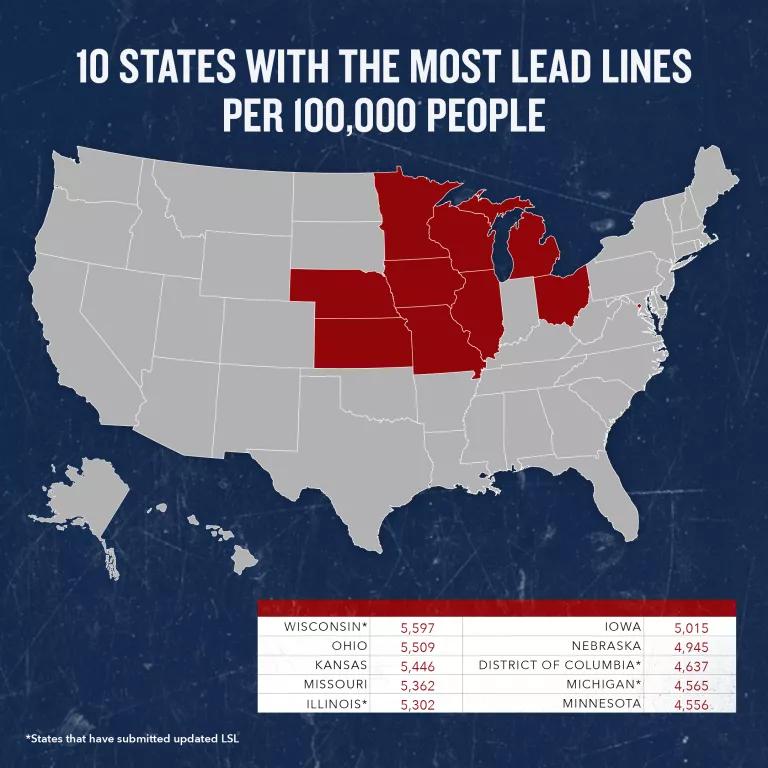
We also asked states whether they had estimates of the number of “partial” lead service lines (that is, pipes that were partially lead and partially some other material, such as copper, plastic, or galvanized steel). And we asked whether they knew of any lead “pigtails” or “goosenecks,” which are colorfully named curved pipes that are sometimes used to connect the long straight pipe in a residence’s yard to the water main itself and can be significant contributors to lead in tap water. Only a few states could provide information on partial lead service lines (CA and IN), or on pigtails and goosenecks (IN and MA).
Lead Exposure from Tap Water Poses Real Health Risks to Americans
Lead is a potent neurotoxin that can cause irreversible harm. According to the Centers for Disease Control and Prevention, there is no safe level of lead exposure for children. The EPA notes that low levels of exposure in children are linked to damage to the brain and nervous system, learning disabilities, shorter stature, impaired hearing, and harm to blood cells. Exposed adults can suffer from cardiovascular disease and adverse impacts on reproduction and the kidneys, among other harmful health effects. Yet, despite these known health risks, millions of Americans are still exposed to lead every day because their drinking water runs through lead pipes.
Estimated Number of Total Lead Pipes by State
LSL = lead service line
Related Content
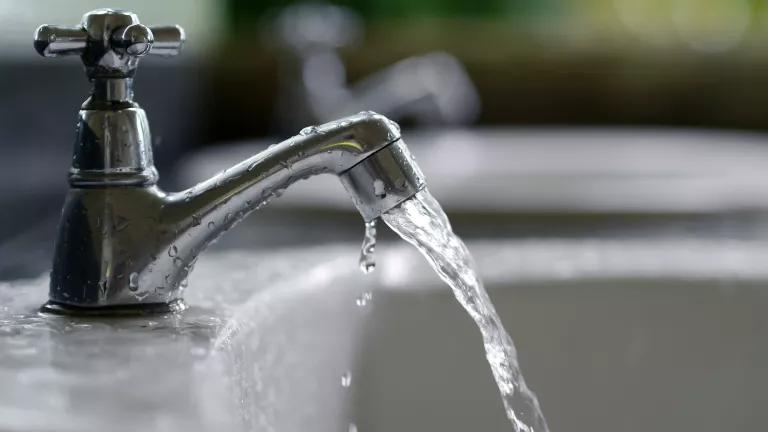
How to Protect Yourself from Lead-Contaminated Water

Principles for Lead Service Line Replacements
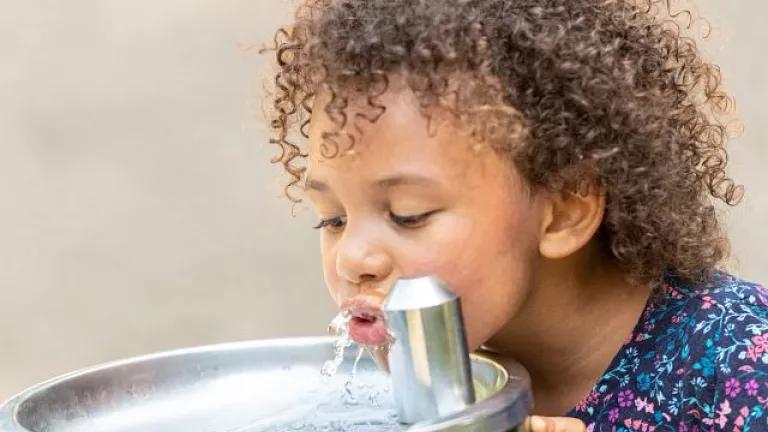
Budget Targets Lead Pipe Removal, Water Infrastructure Fixes, Job Creation
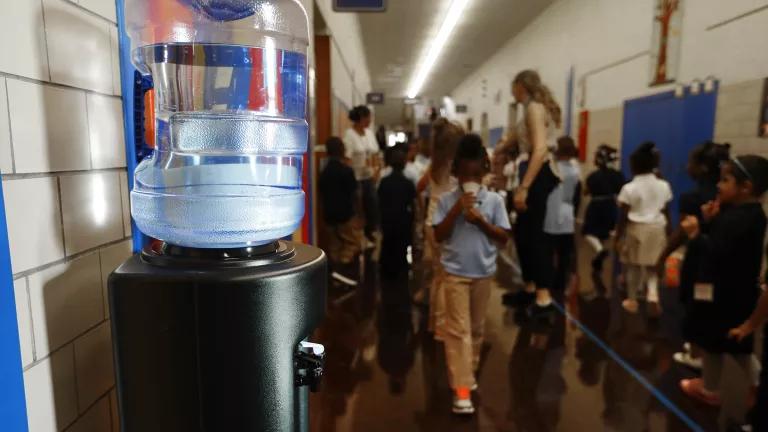
NRDC Sues EPA for Its Illegal Rule That Will Expose Millions to Toxic Lead in Drinking Water
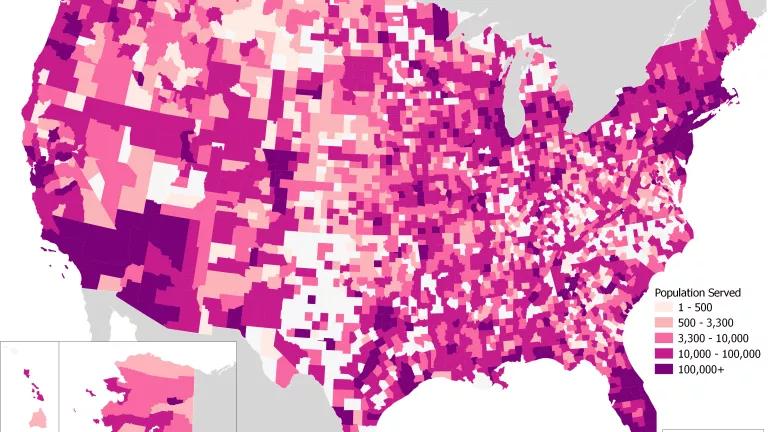
Millions Served by Water Systems Detecting Lead




